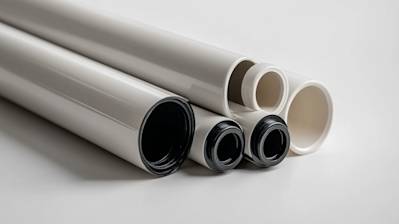Plumbing, a critical part of every building project, requires a specific skill set and knowledge base to master. One of the crucial parts of plumbing is the initial stage, commonly known as rough-in plumbing. The importance of this phase cannot be overstated as it forms the foundation of all subsequent plumbing work. In our guide today, we provide you with 5 essential tips for rough-in plumbing success.
What is Rough-In Plumbing?
Rough-in plumbing refers to the phase during which water supply and drainage pipes are laid, but fixtures and faucets are not yet installed. This stage involves the installation of pipes and lines, which are later connected to fixtures like toilets, sinks, and showers. It's a task that requires expert planning, accuracy, and meticulousness to ensure proper function once the building is complete.
1. Planning is Key to Rough-In Plumbing
Every successful rough-in plumbing project begins with a well-thought-out plan. This involves a comprehensive understanding of the building's layout. You need to know where the bathrooms, kitchen, utility rooms, and other rooms requiring plumbing will be situated. From this, you can determine where the pipes will pass, where they will connect, and how they will be installed.
2. Understand and Follow the Codes
One of the most crucial aspects of rough-in plumbing is adhering to plumbing codes. These regulations are set by local and national governing bodies to ensure the safety and effectiveness of plumbing systems. Violating these codes can result in hefty fines, not to mention potential damage or dangers to the building and its occupants. Always keep yourself updated and follow these codes for successful rough-in plumbing.
3. Invest in Quality Materials for Rough-In Plumbing
The quality of materials you use in rough-in plumbing is paramount to the system's life span. Investing in high-quality materials can save you from future leakages, blockages, and pipe bursts. While these materials might cost a bit more upfront, they'll save you from expensive repair or replacement jobs down the line.
4. Don't Neglect Proper Ventilation
In the rush to get pipes laid and connected, many people overlook the significant aspect of ventilation. Proper venting is crucial for maintaining the correct pressure in the drainage system. This allows water to flow smoothly, prevents sewer gases from going back into the house, and allows noxious gases to escape. Therefore, always account for proper ventilation in your rough-in plumbing plans.
5. Precision & Accuracy: The Hallmark of Rough-In Plumbing Success
Rough-in plumbing is a precision job. Every pipe and connection has to be at the right place, angle, and height. Improper measurements or slight miscalculations could lead to severe problems in the operational phase of the plumbing system. Hence, keep your measurements precise and accurate to ensure the job is done correctly the first time.
While rough-in plumbing might appear challenging, keeping these five essential tips in mind can lead to a smoother process and successful completion. Planning is key, adhering to codes is fundamental, quality materials are crucial, ventilation is essential, and precision is the bedrock of success in rough-in plumbing. Keep yourself informed, stay updated and ensure your plumbing project success!
Rough-in plumbing is often a misunderstood term, but it could unlock a whole world of opportunities for those undertaking home renovation or construction projects. This comprehensive FAQ aims to shed light on rough-in plumbing, its necessities, and various components.
FAQS on Rough-in Plumbing
1. What is Rough-in Plumbing?
Rough-in plumbing implies the phase of a plumbing job where water supply and drainage pipes are run throughout a house. This process is typically done before the walls, ceilings, and floors are set in place. At this phase, pipes aren't yet connected to fixtures. The term "rough-in" generally refers to the stage where construction is left in a state suitable for finishing.
2. Why is Rough-in Plumbing Important?
Proper rough-in plumbing ensures that subsequent laying of bathroom fixtures or revamping of kitchen spacing doesn't lead to disarray when setting the final outlets. Essentially, rough-in plumbing helps sketch the layout for the final fixtures placement, ensuring it aligns with your plumbing design blueprints.
3. What is Included in Rough-in Plumbing?
Rough-in plumbing includes laying down drain lines, water supply lines, and vent stacks. If it's for a toilet, measurements for the toilet flange, other fixtures are sort. Vents for sinks, showers, and bathtubs are also determined.
4. What are the Sizes for Rough-in Plumbing?
The rough-in plumbing size will significantly depend on the type of fixture it is designed for. The standard rough-in size for toilets is 12 inches, bathtubs usually require a total vertical distance of 60 inches from the floor, and sinks typically need about 18 to 20 inches.
5. Are There Codes for Rough-in Plumbing?
Yes, each state and area have distinct building and plumbing codes. These codes generally dictate certain aspects such as the distance a particular fixture needs to be placed from the main drain, the size of the conduit, among other things.
Understanding The Process of Rough-in Plumbing
6. What is the First Step in Rough-in Plumbing?
Planning is the first step in any successful rough-in plumbing. Plumbers need to ensure they have accurate blueprints of the house design, mapping every exact place where fixtures will be installed. Failure to do this might pose constraints during the installation process.
7. How to Measure Rough-in Plumbing?
In measuring rough-in plumbing, accuracy should be prioritized. For instance, toilet rough-in is measured from the wall to the center of the closet bolt of the toilet. Sink rough-in is determined by measuring from the floor to where the sink will be installed.
8. Can I Do Rough-in Plumbing Myself?
While there are DIY rough-in plumbing instructions available, it's highly recommended to hire a professional plumber. Independent plumbing can lead to errors that might eventually cause significant damages, become costly, and put your house at risk of not meeting the plumbing codes. A professional plumber understands the code requirements and has the expertise and experience to ensure an effective job.
9. What Happens After Rough-in Plumbing?
Once rough-in plumbing is done, a plumbing inspector checks it out to ensure it meets all the regulations and codes. If it passes, the plumber can proceed to install fixtures such as sinks, toilets, bathtubs, etc.
Conclusion
Rough-in plumbing is arguably one of the most critical stages in home construction or renovation projects. It requires precision execution to ensure fixtures will be correctly set, and legal stipulations are maintained. Whether you are a homeowner or a construction enthusiast, understanding rough-in plumbing can save you from possible future casualties related to poor plumbing.
Summary
Rough-in plumbing is all about getting the groundwork right, laying the foundation for the final installation processes. Careful measurements and attention to every specific detail is key in this task. Even though rough-in plumbing is in the walls and under the stairs out of visible sight, it's importance should never be downplayed. It ensures comfort and reliability, providing the operational backbone for the whole plumbing system.
The success of any plumbing system depends largely on the quality of its rough-in plumbing. Tracing the plumbing lines accurately, setting the right pipe sizes and following the regional building codes strictly can save a lot of time and potential problems. Through proper rough-in plumbing, potential plumbing mishaps can be minimized significantly. Despite being invisible, it's a crucial part of constructing a safe, efficient and functioning plumbing system.
Although it's unseen and often overlooked, rough-in plumbing is an integral piece of the plumbing puzzle. It paves the path for the seamless functioning of all the water appliances in both commercial and residential premises. It's the silent hero behind the scenes that ensures water flows where it should and waste exits where it needs to, contributing to overall sanitation and hygiene. The quality of rough-in plumbing work directly impacts the functionality and reliability of the entire plumbing system.
About KYPD Plumbing
Meet KYPD Plumbing- your go-to plumbing service provider based right here in Nicholasville, KY. We are a team of experienced and dedicated professionals committed to fixing any of your plumbing issues. Be it leaky faucets, clogged drains or an extensive burst pipe situation, you name it; we've got your back. Over the years, we've served numerous households and businesses in Nicholasville, helping solve their plumbing headaches with individual care and professional expertise. Our goal is to ensure you a clean, convenient and efficient living and working environment. Quality, reliability, and affordability- these aren’t just words for us, but a promise from KYPD Plumbing of Nicholasville, KY.
Tags: Plumbing Tips, Rough-In Plumbing Techniques, Plumbing Best Practices,














